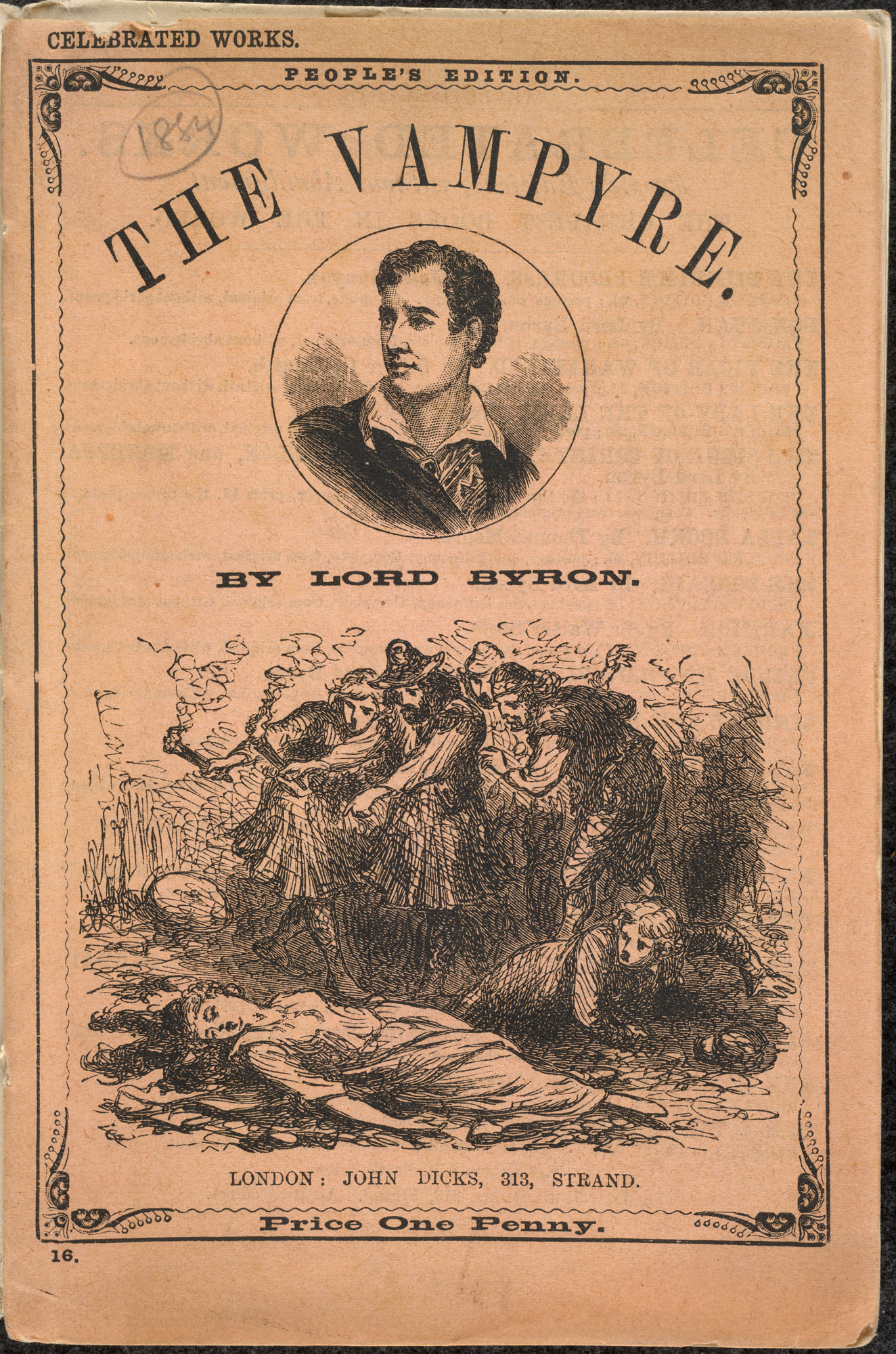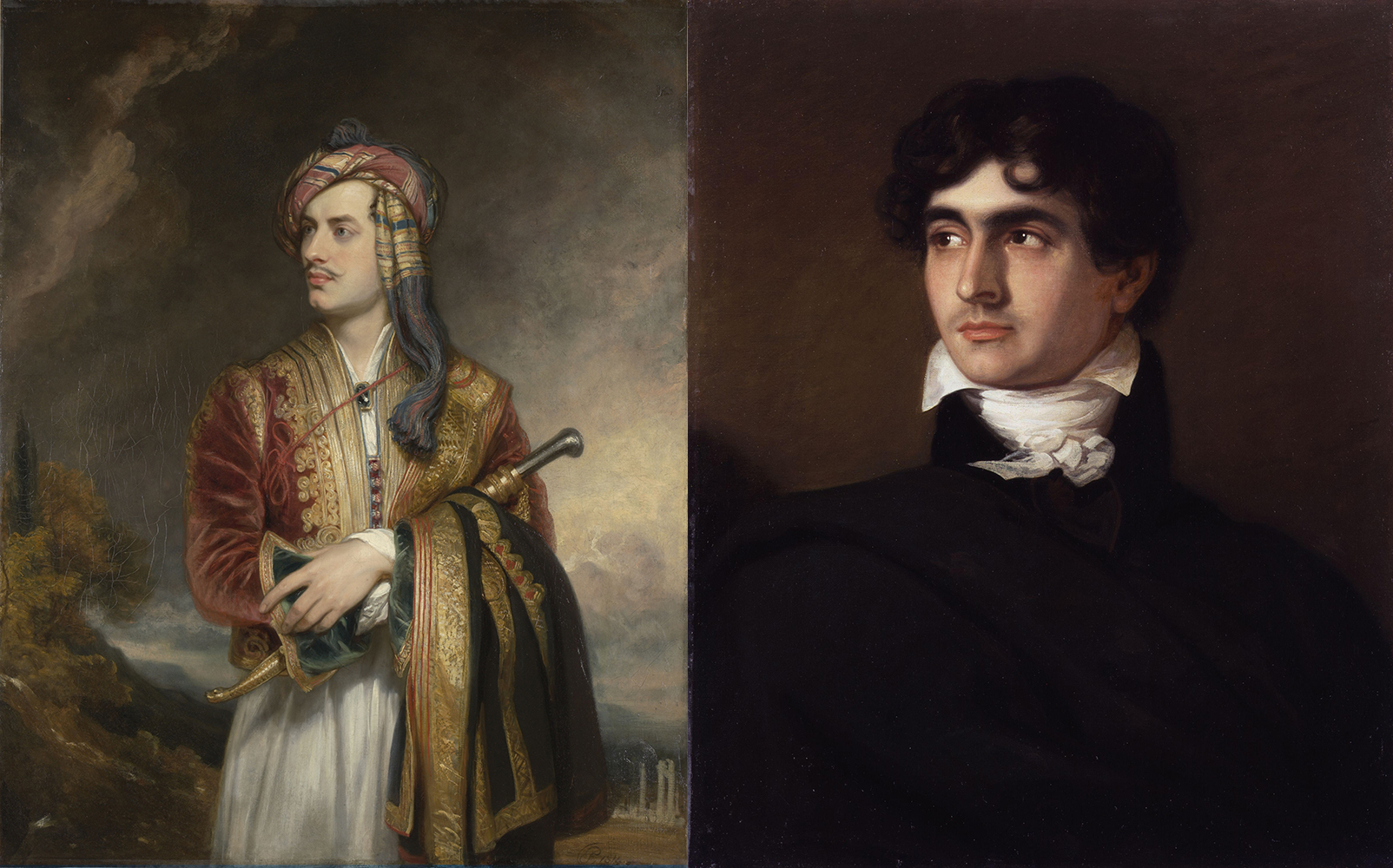William McKelvy is an associate professor of English and scholar of nineteenth-century British literature and culture.

Two hundred years ago, in April 1819, the New Monthly Magazine in London would first publish “The Vampyre: a tale by Lord Byron,” what many now consider the inaugural text of modern vampire fiction. Almost simultaneously it appeared in book form, with six different London editions dated to 1819. In the same year, it began to circulate on the Continent in an English edition printed in Paris followed by translations into French and German. A dramatic adaptation would reach the London stage in 1820, the first of some thirty-five different versions to be staged throughout Europe and America over the course of the nineteenth century. Goethe, the great German poet and polymath, would declare The Vampyre to be Byron’s masterpiece.
But, of course, the much reprinted and repurposed tale The Vampyre was not written by Byron. It was written by John William Polidori, the young physician who accompanied Byron on his exile from England following the poet’s highly publicized and sexually scandalous separation from his newly wed wife in 1816. I begin here by recalling the false and persistent attributions of The Vampyre to Byron’s pen because Polidori’s story, if not by Byron, is clearly about him, and Polidori’s innovative vision of the vampire as a Byronic figure — a seductive aristocrat exercising unhallowed powers over both women and men — largely explains why his blood-sucking monster, Lord Ruthven, became the primary template for the modern vampire.
Henry Colburn and other publishers responsible for Lord Ruthven’s viral circulation deliberately exploited the text’s flagrant indeterminacy — Was it by Byron or about him? — by releasing different editions with a range of attributions. In some, authorship was directly attributed to Byron. In others, no direct authorship was declared but prefatory material clearly pointed to Byron. In only one case did an edition of 1819 get close to the facts with the authorial phrasing amended to a Tale related by Lord Byron to Dr. Polidori. Polidori’s story was, in truth, a response to his hearing or reading of a much shorter tale by Byron that had been composed in June of 1816. But the publication in the summer of 1819 of that tale as part of Byron’s attempt to disavow authorship of The Vampyre only assured that it would be traced to Byron in some way.

The confusions at hand here were all too familiar to Byron’s readers ever since the first installments of his poem Childe Harold’s Pilgrimage appeared in 1812 and made him famous overnight. Much interest in the poem was aroused by the clear sense it was a thinly disguised autobiographical fiction about Byron’s travels through the Iberian Peninsula, the Mediterranean, and Ottoman dominions in the Levant. Much like The Vampyre after it, only more literally so, Childe Harold’s Pilgrimage was both by Byron and about him.
Before Polidori’s Lord Ruthven rose to fame in 1819, vampires in the English imagination were routinely associated with an exotic Near East composed of lands ruled by the Austrian and Ottoman empires. These locales were not only spatially distant from England, but temporally displaced. They were conceived as primitive territories ridden with superstitious beliefs of the past. Polidori changed all that by making his vampire a glamorous figure whose activities begin and end in London’s high society. Like the charismatically handsome Byron whose physique was marred by a clubfoot, Lord Ruthven possesses a face with a “deadly hue” that is nevertheless “beautiful” in outline and form, an incongruity that seems only to enhance his powers of fascination.

After describing Ruthven’s seductive hold over all women — including “the virtuous wife and innocent daughter” — the tale suddenly shifts to his hold over Aubrey, a wealthy and naive young man. The two soon set off together on a Grand Tour that will lead to Rome, where Aubrey’s increasing ambivalence about his mentor clarifies: having discovered Ruthven’s plot to “ruin” yet another girl, he forewarns her and flees in disgust to Greece. There Aubrey promptly falls in love with a Greek maiden named Ianthe, and she is just as promptly slain by an unidentified vampire, thereby driving a heartbroken Aubrey to the brink of death before Ruthven suddenly reappears and tenderly nurses him back to health. Their travels recommence, and tragedy next comes in the shape of Ruthven’s death from wounds received from brigands. As he dies, Ruthven extracts a solemn oath from Aubrey to tell no one of his crimes or death. Soon after Aubrey discovers evidence that Ianthe’s attacker was Ruthven himself. On his return to England, Aubrey is horrified to watch his younger sister courted by Ruthven. As their marriage approaches, Aubrey, who feels bound by his oath of silence, is driven mad by his inability to intervene. At the tale’s end, readers learn that Aubrey’s sister has indeed “glutted the thirst of a VAMPYRE!”
As one early review rightly observed, “the natives of England are now first made subject to the horrible attacks of Vampyres,” and the vampire is not a Serbian peasant haunting an obscure village, but “a bustling inhabitant of the world; restless and erratic; a nobleman subject to . . . pecuniary embarrassments.” In a decisive stroke, Polidori had humanized the vampire, made him not an exotic primitive but an emblem of the modern soul and its multitudinous maladies. Byron scholars and academic readers continue to keep the brilliant and complicated lord alive, but there can be no doubt that Byron has most frequently left his grave to walk among the living as any number of figures in vampire fictions that have been avidly consumed by lay readers. Many of these revenants, whose numbers are legion, owe their time among us to John William Polidori.





